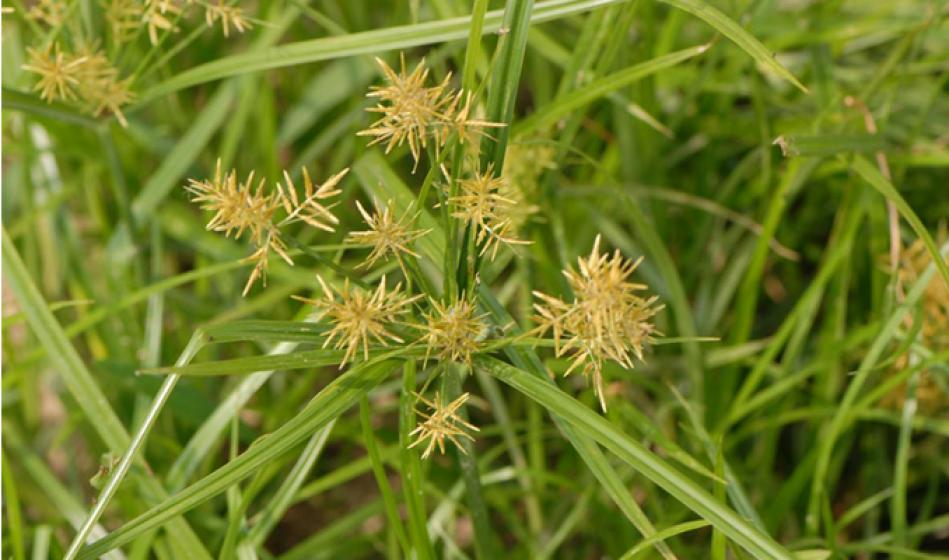This is the time of year when weeds, especially the weed known as nutsedge, really start creeping into our landscapes. Nutsedge is one of those turfgrass weeds that can drive a homeowner nuts. Also known as nutgrass or swampgrass, these weeds are extremely aggressive and frequently infest local lawns, vegetable and flower gardens.
Most nutsedges are perennials (meaning they come back year after year) whose leaves die back in the fall when temperatures begin to drop. Nutsedge prefers moist soil, although it can thrive in almost any kind of soil – even dry soil. These pesky weeds spread by either small tubers, by creeping rhizomes or by seed. New tubers begin forming four to six weeks after a new shoot emerges. Individual nutsedge plants can form patches up to 10 feet or more in diameter.
Nutsedge can be very tricky to get rid of and controlling it is likely to be a lengthy process. Long term control includes both cultural and chemical management methods. Once controlled, sanitation is required to prevent new infestations. Any new outbreak should be managed immediately to prevent the spread of additional weeds. The most effective way to control nutsedge is by employing a combination of several different methods.
Here are some ways to control nutsedge in your landscape:
- Follow all recommended practices for your grass type including mowing at the ideal height, applying fertilizer at the proper rate and time, and maintaining the ideal soil PH.
- Proper watering is key, since nutsedge thrives in excessively moist soil, so be aware of the amount and timing of irrigation. Poor drainage can also create the perfect environment for nutsedge.
- Monitor and treat insect and disease infestations to prevent bare spots that may become infested by nutsedge.
- Thoroughly clean tools and equipment such as tillers that have been used in an infested area to avoid spreading tubers and rhizome.
- Eliminate very small patches of nutsedge by digging. Ensure removal of the spreading tubers by digging at least 10 inches deep and eight to ten inches beyond the diameter of the above-ground plant. This is best done early in the spring before more tubers are produced.
- Control chemically with post-emergence herbicides. Because different herbicides are effective against different species, it is important to correctly identify the nutsedge species in your lawn. Herbicides also vary regarding the plants they can be safely used around without causing damage. Always check the label to make sure the pesticide you choose is safe for surrounding plants. Our experts recommend Hi-Yield Nutsedge Control. This selective post emergent herbicide can be used in landscaped areas or lawns. May be used on both cool and warm season turfgrass including: Bahia, Bermuda, Centipede, Creeping Bentgrass, Kentucky Bluegrass, St. Augustine, Tall and Fine Fescue, Perennial Ryegrass and Zoysia.
Learn to recognize Nutsedge to avoid accidentally bringing it in topsoil or plants. Here's a few tips on identifying nutsedge:
Yellow nutsedge is most easily identified by the triangular shape of the stem. If you roll the stem of the plant in your fingers, you should be able to feel the triangular shape. The leaves are light green to yellowish and are slick or waxy to the touch. It grows most actively during the hot summer months. Typically, the leaves will grow 2 to 4 inches above the turf canopy. Yellow nutsedge is not as easy to see in early spring and in fall, when temperatures are cooler and growth is slower.

